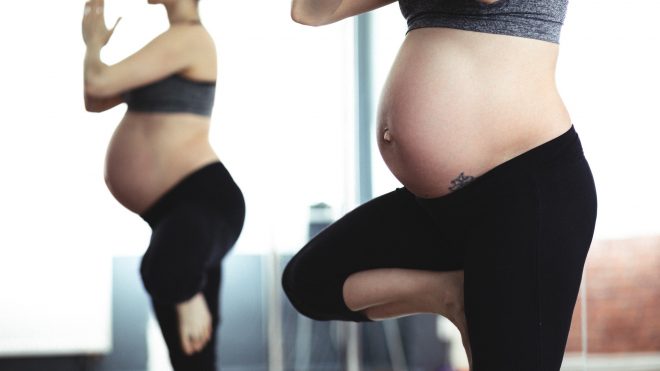Patients often ask us if it is safe to exercise during pregnancy. Yes, it is – in fact, exercise can help keep a mother and her baby healthy and ease some pregnancy symptoms such as back pain, water retention and anxiety. Women can keep exercising throughout their pregnancy until it becomes uncomfortable. Being active during pregnancy can also help women recover more quickly after giving birth.
The body goes through many changes while pregnant. Hormones loosen ligaments (which can increase the risk of joint injuries) and body weight increases which can affect balance and coordination. It’s important to listen to the body and to modify exercise routines when necessary.
Moderate intensity exercise is recommended. This means exercising ‘somewhat hard’ where there’s an increase in heart rate and breathing but you’re not out of breath e.g. brisk walking.
Pregnant women who are already active can aim to do 150-300 minutes of moderate intensity exercise on most, if not all, days of the week for at least 30 minutes at a time.
Pregnant women who are inactive or overweight can aim to exercise 3-4 days a week on alternate days. They can start at 15-20 minutes at a time and gradually build on this.
Types of exercise
A combination of cardio and strength training is recommended. Walking, swimming, pilates and moderate strength training (e.g. light weights and resistance band or body weight exercises) are all suitable. Avoid exercising in high temperatures (including doing bikram yoga), heavy lifting and activities that need straining or holding the breath. Activities that could result in falls or collisions – such as martial arts, contact sports or skiing – should also be avoided.
Warning signs
Pregnant women should speak to their doctor before starting an exercise program to ensure that they don’t have any health issues that could affect their or their baby’s health.
Women should stop exercising immediately if they experience:
- chest pain
- unexplained shortness of breath
- dizziness, feeling faint or headache
- muscle weakness
- calf pain, swelling or redness
- sudden swelling of the ankles, hands or face
- vaginal bleeding or amniotic fluid loss
- decreased fetal movement
- uterine contractions or pain in the lower back, pelvic area or abdomen (potentially indicating preterm labour)
Helpful reading
Ranzcog ‘Exercise during Pregnancy’
Better Health Channel ‘Pregnancy and Exercise’
Mamamia ‘Exercise during pregnancy’


